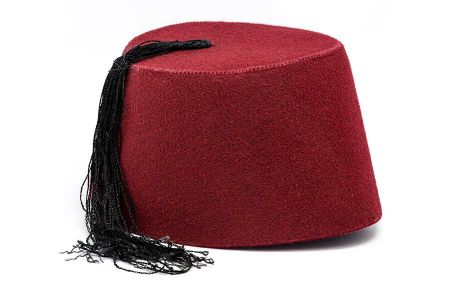Fes or hat - the laws on head covering in Turkey
- Written by Portal Editor
In pictures or photographs of the Orient and the Balkans in the early 19th century, men are usually seen wearing a special headgear called fez / fez or tarbush.
This headgear, mainly made of red felt, shaped like a truncated cone and equipped with a black, blue or gold tassel, has a long history that goes back to the year 930. Due to armed conflicts, the Hajj was diverted to Fes for almost two decades for all pilgrims west of the Nile in 930, which increased the importance of the city of Fes for the believers.(an Arab-Turkish headdress in the shape of a truncated cone made of red felt with a tassel)

After the conquest of Constantinople by the Ottomans, the fez headgear first made its way to Europe in 1453 by traveling salesmen via Venice, where it quickly became fashionable as a servant's costume.
Headwear through the ages - from tricorne hats to fez hats

Mustafa Kemal Atatürk is putting the hat back on the political agenda
For many Turks at that time, it was a clear provocation when the hat was introduced by the state in 1925 and made compulsory for everyone. Thus Atatürk was greeted with icy silence as he moved through Kastamonu on the Black Sea. A light-colored summer suit, the top buttons on the shirt undone, the Panama hat, all the Western paraphernalia that met with incomprehension and disapproval in the ultra-conservative town of Kastamonu. You don't have to say hello to someone like that.
Modernization under threat of punishment
In addition to this law, which Atatürk described as modernizing the country and its citizens, he introduced metric measurements and the Latin script, to name just two other examples of modernization. For Atatürk, fez and turban were symbols of backwardness and of preventing progress. Just a few days after the enactment of this law, all stocks of hats in Turkey were sold out. The Calabrians and Bowlers that were current at the time were immediately reordered, but transporting them from Europe was time-consuming. Since the law had been passed and punishment threatened, many Turks made do with home-made hats made of cardboard and paper. Due to their tradition, however, there were also many Turks who refused to take off their turban and replace it with a hat. Here the military acted very brutally and only a short time later more than 80 hat refusers were executed. A rumor even circulated among Atatürk's supporters that Atatürk would have preferred to have the villages of recalcitrant hat refusers bombed. By 1930, the fez had almost completely disappeared from the streets.
EU calls for legislative change
As early as 2004, the European Union had called for changes to be made to some legal texts, including the controversial hat law. At that time, the reform of this law meant that hat refusers and recalcitrant turban wearers are only threatened with imprisonment for up to 6 months. In reality, however, there have been no arrests for violating this outdated law for years.
In complete contrast to the inveterate Kemalists, Tayyip Erdogan's AKP wants to finally scrap this law. In addition to the justification that a law does not have to last for all eternity, it is the everyday practice that one encounters on the street: who wears a head covering anyway? And if so, shouldn't it be up to each individual what to cover themselves with?
The law is far more than just "old hat", it is backwards and should be removed from the legal texts.
Please read as well:
